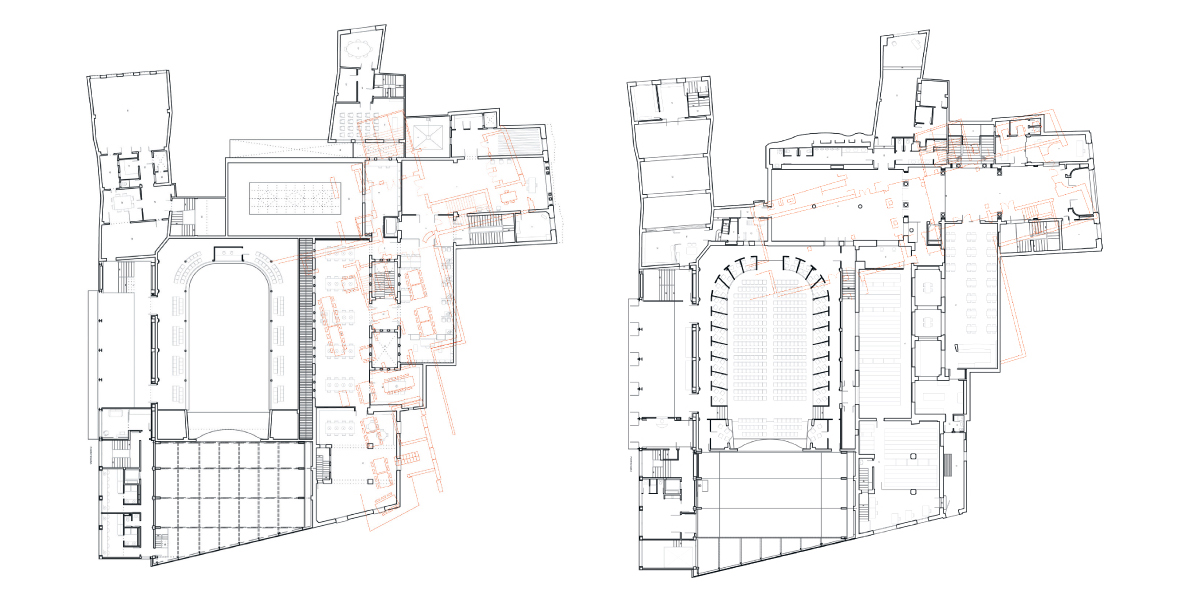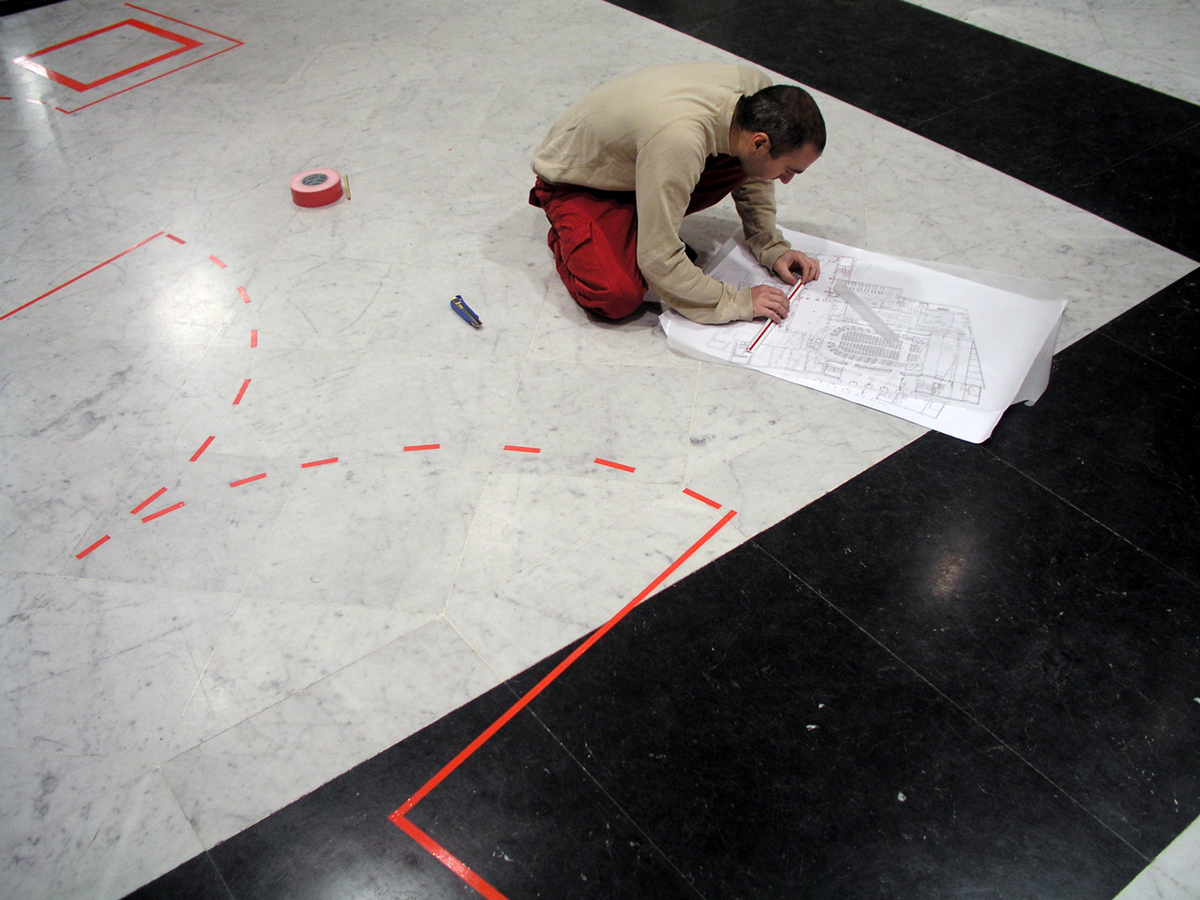
La distancia más corta entre dos puntos es una línea recta. Territori 03/04. Centro de Lectura. Reus. 2003
descargar pdf
“Territorio: (del lat. territorium) m. Porción de la superficie terrestre perteneciente a una nación, región, provincia, etc.”
Si nos limitamos a la definición que de esta palabra nos ofrece el diccionario, el término territorio define terrenos inmensos, concretos, delimitados por fronteras físicas, políticas o ideológicas, regiones a defender. Sin embargo, una interpretación más subjetiva nos habla de espacios personales comunes o íntimos, relacionados más con el individuo y su espacio vivencial: nuestra habitación, nuestra casa, barrio o ciudad. El territorio sería entonces el lugar que habitamos, entornos con los que a menudo -sumidos en la cotidianeidad- establecemos relaciones impersonales y autómatas. Reflexionar sobre estas relaciones y revelar la arquitectura y el deambular como experiencia estética son el punto de partida de este ejercicio.
A diferencia de otras intervenciones anteriores realizadas también con cinta adhesiva, en esta ocasión el dibujo no ofrece un espacio irreal paralelo, sino que es el propio edificio el que genera un espacio alternativo. De esta manera es el Centro de Lectura el que se convierte en maqueta de sí mismo. Un duplicado a escala real girado 14 grados del plano del vestíbulo y las áreas comunes de la primera y segunda planta desde las que se distribuyen las diferentes zonas de actividades comunitarias. Un gran dibujo que se despliega derribando mentalmente lo construido, generando una tensión entre el espacio real y su doble. Una ilusión destinada no a engañar la percepción del espectador, sino más bien a proponerle una lectura compleja del entorno, del dibujo como experiencia, apropiación y medida.
The shortest distance between two points is a straight line Territori 03/04. Lecture Center. Reus. 2003
download pdf
“Territory: (from the lat. territorium) n. Portion of the Earth belonging to a nation, region, province, etc.”
If we limit the definition of the word to the entry in the dictionary, the term territory defines immense, specific land, limited by physical, political or ideological borders, regions that need to be defended. However, a more subjective interpretation reveals indefinite or intimate spaces, closer to the individual and the experiential space: our room, our house, our neighbourhood, our city. In that case, the territory would refer to the area we inhabit. Environments with which we, immersed in our routines, often establish impersonal and automatic relationships. The starting point for this exercise is a reflection about those relationships and the consideration of architecture and itinerary as an aesthetic experience.
In comparison to other previous interventions that also used adhesive tape, this time the drawing does not offer a parallel unreal space. Instead, the actual building generates an alternative space, becoming a model of itself. A scale duplicate of the plan of the hall and of the areas in the first and second floors from which the centre’s different group activity zones are distributed. It is based on a 14º plan rotation that creates tension between the real space and his double, which mentally knocks down the construc- tion as it unfolds. The illusion is not aimed at deceiving the viewers’ perception, but rather to propose a complex interpretation of the environment, of drawing as experience, appropriation and measure.








